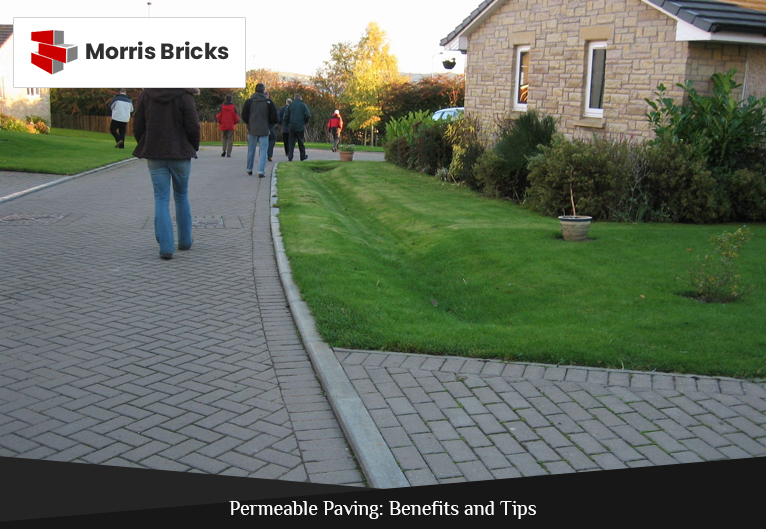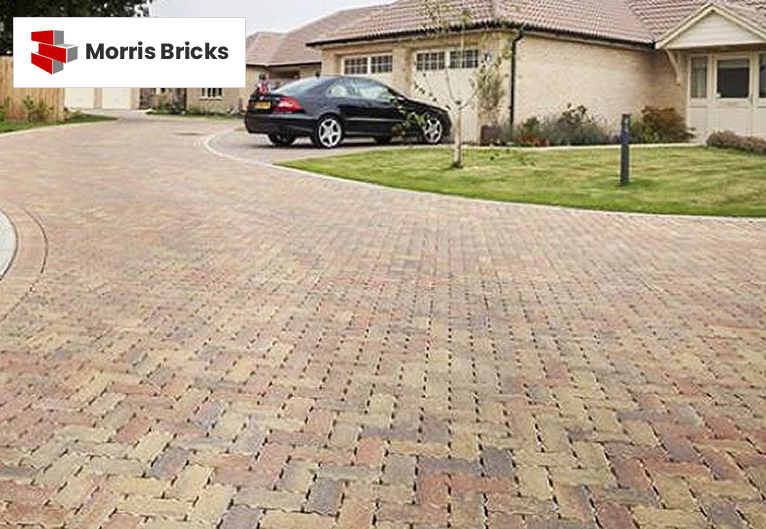Permeable Paving: Benefits and Tips
Permeable paving is a type of pavement that allows water to pass through it, soaking into the ground rather than running off into storm drains. This innovative approach to paving is becoming more popular as people look for ways to manage stormwater, reduce flooding, and protect the environment. Traditional pavement, like concrete or asphalt, creates a hard surface that blocks water from seeping into the earth. This can lead to water runoff, which can cause erosion, flooding, and pollution in nearby waterways.
Permeable paving, on the other hand, helps to manage water naturally, letting it soak into the ground just like it would if the area were covered with grass or soil. Whether you’re thinking about updating your driveway, walkway, or patio, permeable paving offers a range of benefits that go beyond just aesthetics.
What Is Permeable Paving?
Permeable paving is a method of paving that allows water to filter through the surface and into the ground. Unlike traditional pavement, which creates a solid barrier, permeable paving is designed with gaps or spaces that let water pass through.
How It Works
Permeable paving works by allowing rainwater to flow through the surface and into the soil below. This helps to replenish groundwater and reduce the amount of water that runs off into storm drains.
Simple Explanation:
- Small Gaps: Permeable pavers are designed with small gaps between them, allowing water to seep through the spaces.
- Layers of Material: Beneath the pavers, there are usually layers of gravel or other materials that help filter and store the water until it can soak into the soil.
- Natural Filtration: As water passes through the layers, it’s naturally filtered, which helps remove pollutants before the water reaches the groundwater.
Types of Permeable Paving
There are different types of permeable paving, each with its own unique benefits.
Simple Explanation:
- Permeable Pavers: These are individual bricks or stones with spaces between them that allow water to flow through.
- Porous Asphalt: This type of asphalt has small holes that let water pass through, unlike regular asphalt, which is solid.
- Permeable Concrete: Similar to porous asphalt, permeable concrete is made with fewer fine materials, creating spaces that allow water to seep through.
Benefits of Permeable Paving
Permeable paving offers several benefits, making it a smart choice for both residential and commercial properties. These benefits extend beyond just water management, impacting the environment and your property in positive ways.
Reducing Flooding
One of the biggest benefits of permeable paving is its ability to reduce flooding. By allowing water to soak into the ground, it reduces the amount of water that collects on the surface.
Simple Explanation:
- Natural Drainage: Permeable paving acts like a natural drainage system, allowing water to move into the ground rather than pooling on the surface.
- Less Runoff: With traditional pavement, water often runs off into storm drains, which can become overwhelmed during heavy rains, leading to floods. Permeable paving reduces this runoff.
- Safer Surfaces: By reducing standing water, permeable paving can also make surfaces safer to walk or drive on, especially after a rainstorm.
Protecting the Environment
Permeable paving helps protect the environment by reducing pollution and promoting healthier ecosystems.
Simple Explanation:
- Filtering Pollutants: As water passes through the permeable paving, it’s filtered by the layers of gravel and soil, which helps remove harmful pollutants before they reach the groundwater.
- Replenishing Groundwater: By allowing water to soak into the ground, permeable paving helps replenish local groundwater supplies, which is important for maintaining healthy water levels in wells and natural springs.
- Reducing Heat: Permeable surfaces can also reduce the heat island effect, which is when cities become hotter than the surrounding areas due to the large amounts of concrete and asphalt. Permeable paving allows the ground to stay cooler.
Improving Aesthetics
Permeable paving is not just functional; it can also improve the look of your property.
Simple Explanation:
- Variety of Designs: Permeable pavers come in a wide range of colors, shapes, and sizes, allowing you to create a unique and attractive look for your driveway, walkway, or patio.
- Natural Look: Because permeable paving often uses natural materials like stone or brick, it can blend well with your landscaping and add to the overall aesthetic of your property.
- Customizable: You can mix and match different types of pavers to create patterns or designs that reflect your personal style.
Lowering Maintenance Costs
Permeable paving can be easier and less expensive to maintain than traditional pavement.
Simple Explanation:
- Durable Materials: Permeable pavers are often made from durable materials that can withstand weather and heavy use, meaning they may need fewer repairs over time.
- Easy Repairs: If a paver does become damaged, it’s usually easy to replace just that one piece without having to redo the entire surface.
- Long-Lasting: With proper installation and care, permeable paving can last for many years, reducing the need for costly replacements.
Tips for Installing Permeable Paving
If you’re considering installing permeable paving on your property, there are a few things to keep in mind to ensure the best results. Proper installation is key to making sure the paving performs well and lasts for a long time.
Choosing the Right Materials
The first step in installing permeable paving is choosing the right materials for your project.
Simple Explanation:
- Consider Your Climate: Different materials may perform better in certain climates. For example, porous asphalt might be a good choice in areas with heavy rain, while permeable pavers might work better in drier climates.
- Think About Style: Choose materials that match the style of your home and landscaping. Natural stone pavers can create a rustic look, while sleek concrete pavers might be better for a modern design.
- Check Durability: Make sure the materials you choose are durable enough to handle the amount of traffic and weather they’ll be exposed to.
Preparing the Site
Proper site preparation is essential for successful permeable paving installation.
Simple Explanation:
- Clear the Area: Before installing the paving, clear the area of any debris, plants, or existing pavement. The ground should be level and free of obstacles.
- Excavation: Depending on the type of permeable paving you’re using, you may need to excavate the site to create space for the layers of gravel or other materials that will help with drainage.
- Grading: Make sure the area is graded so that water will flow toward the permeable paving and away from your home or other structures.
Installing the Paving
Once the site is prepared, it’s time to install the permeable paving.
Simple Explanation:
- Layering: Most permeable paving systems involve multiple layers, including a base layer of gravel, a layer of sand or fine aggregate, and then the pavers or porous asphalt on top.
- Gaps for Water: Make sure there are gaps between the pavers or that the material itself is porous, allowing water to pass through. These gaps can be filled with gravel, sand, or other materials to help with filtration.
- Compact the Layers: After laying each layer, compact it to ensure stability and prevent shifting over time. This helps create a solid, durable surface.
Maintaining Permeable Paving
To keep your permeable paving in good condition, regular maintenance is important.
Simple Explanation:
- Keep It Clean: Remove leaves, dirt, and debris from the surface regularly to prevent the gaps from getting clogged. This helps maintain proper water flow.
- Inspect for Damage: Check the paving regularly for any signs of damage, such as cracks or loose pavers, and make repairs as needed.
- Replenish Gravel: If you notice the gravel between the pavers is getting low, add more to keep the gaps filled and maintain the paving’s permeability.
Permeable paving is an excellent choice for anyone looking to improve the functionality and aesthetics of their property while also helping the environment. By allowing water to soak into the ground, permeable paving reduces flooding, filters pollutants, and helps replenish groundwater. It also offers a range of design options that can enhance the look of your driveway, walkway, or patio.
With proper installation and maintenance, permeable paving can provide a long-lasting, eco-friendly solution for your outdoor spaces. Whether you’re interested in creating a more sustainable landscape or simply want to upgrade your property’s appearance, permeable paving is a smart and stylish choice.

